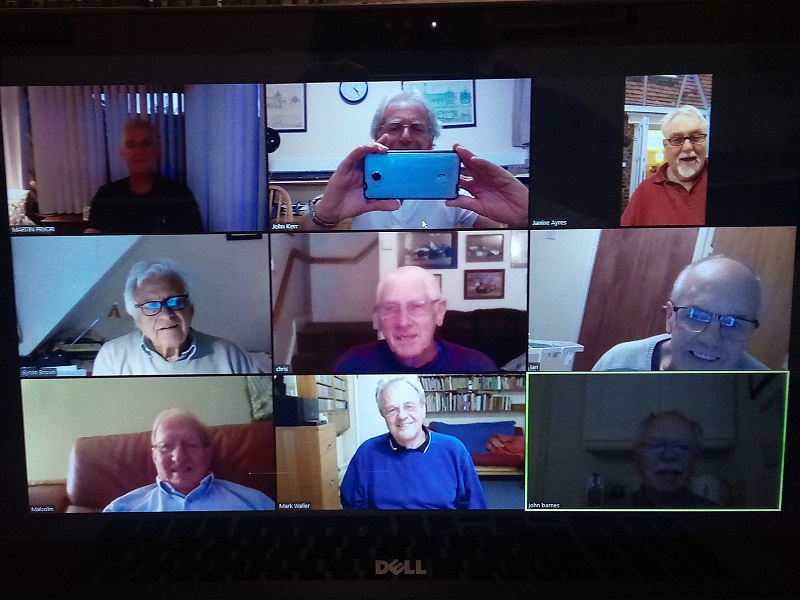
Zoom, zoom zoom! Join our zoom club meetings.

Martin, John K, Jeff, Byron, Chris J, Ian, Malcolm Place, Mark and John B
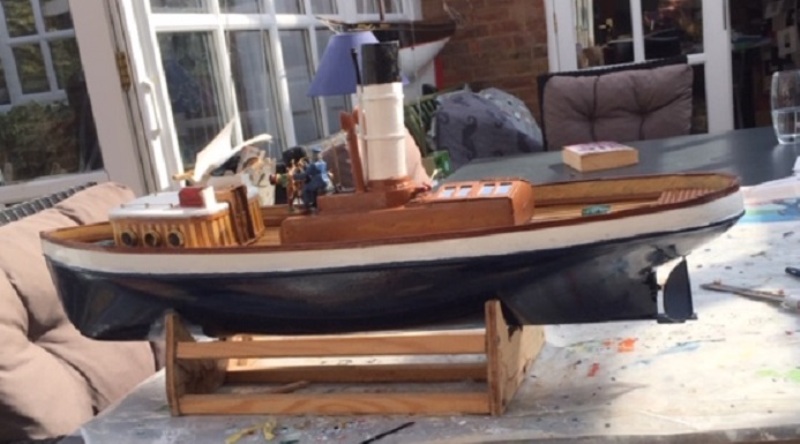
Jeff's new River tug. The tug is a Mountfleet River Queen based on an 1892 boat registered at London after being built at Renfrew and initially called Clive and then Sunny. Mountfield decided to give it a grander title hence River Queen. I think I will go with Sunny.
It came with 2 holes, out of line for rudder and prop. Holes filled appropriately with bungs made from paint brush handles as dowels and re drilled .
Motor prop and correct rudder obtained and nearly fitted with help and supply from Mountfleet. Waiting for a 2mm internal measuring brass tube to fit rudder and servo .... Then for testing on pool!

Jeff's Balmoral is also progressing.....

........but not finished yet

Nightwork from home! Chris J has built a lighthouse for his pond
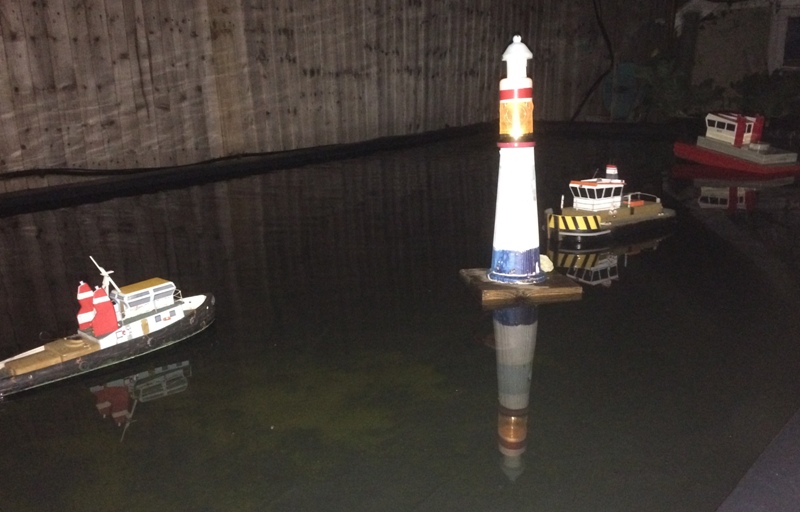
now ready for those long winter evenings

From the past. John K has been clearing out his garage and found some of his old designs. This plug was for his first twin stepped hull.
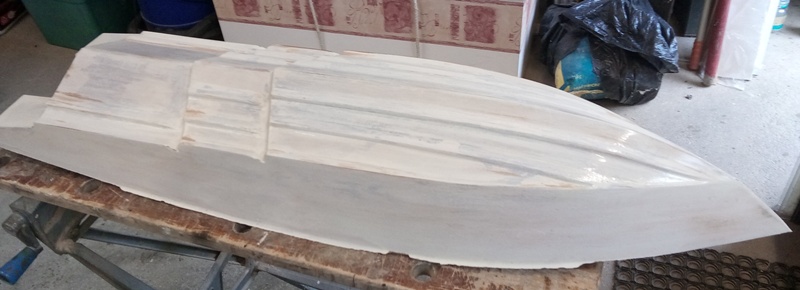
and this mould of his later, improved? twin stepped design. The boats were quick in a straight line but the cornering was poor.

At present. Making detail fittings for the Fairey Marine boats
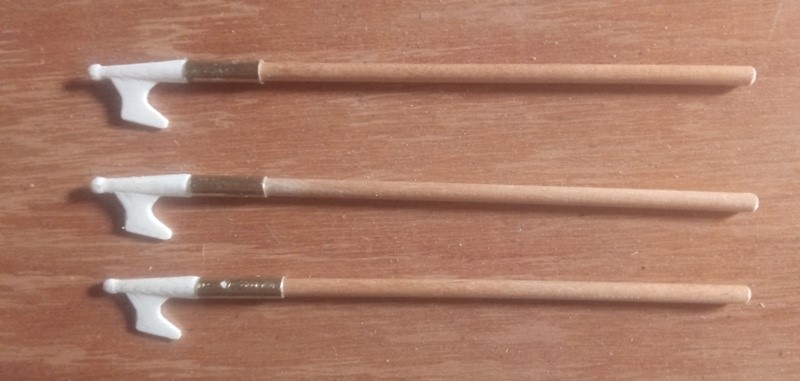
From Ian
Pictures of the ferry, the seats on the upper deck are on the deck but not glued down.
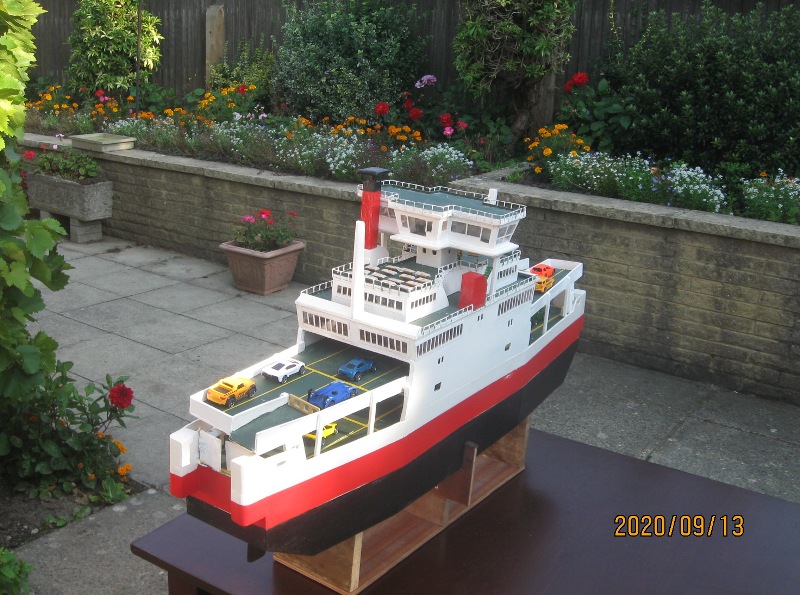
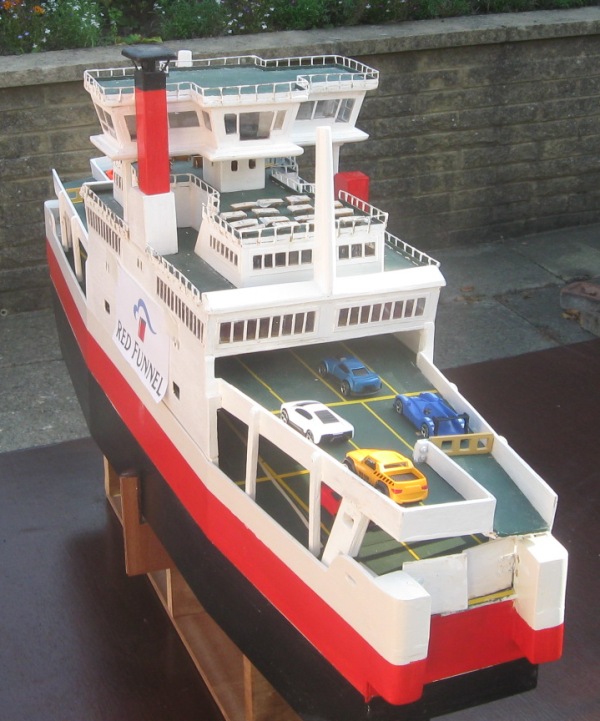
Charles has sent some action shots of one of his lifeboats being launched into Dunorlan Park lake
For the last couple of weeks work on the new boat has paused whilst I have been working on a little side project. A couple of years back I built a Solent Class Lifeboat, which is designed to be launched down a Slipway. I always wanted to launch my boat down a Slipway, so I have built myself a proper Roller Slipway! The design is pretty simple, just a plywood base with a pair of battens 30mm apart in the centre, just wide enough for the keel and a bit extra to allow for clearance. I made some Nylon Rollers (On my new Proxxon Lathe!) and these are mounted on a short length of Brass 4mm Bar, which fit into holes drilled into the battens. There are a further 2 battens, one each side, to support the Bilge Keels. Total length of the Slipway is 2.4m, and the whole contraption is made of 2 pieces which slot together, for easier storage and transport. The raised end is supported by folding legs, and the lower end rests on the ground. There is a 'Stopper' device mounted in the centre of the keel, which is sprung loaded to return to the 'Stop' position. This prevents the boat from going down the slipway, until required. This is attached to a cord which when pulled, moves the Stopper so that it lays flat, thus releasing the boat to roll down the Slipway. When the boat is pulled back up the Slipway, the Stopper just pivots down, so as not to impede the recovery. I have attached a few photos that i took yesterday, when i tried this out for the first time at Dunorlan Park.
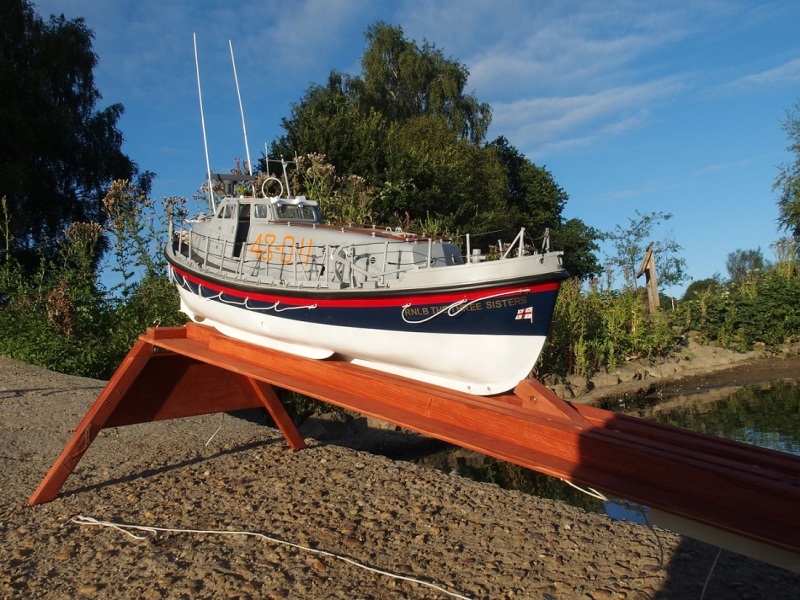
The stopper holds the lifeboat ready
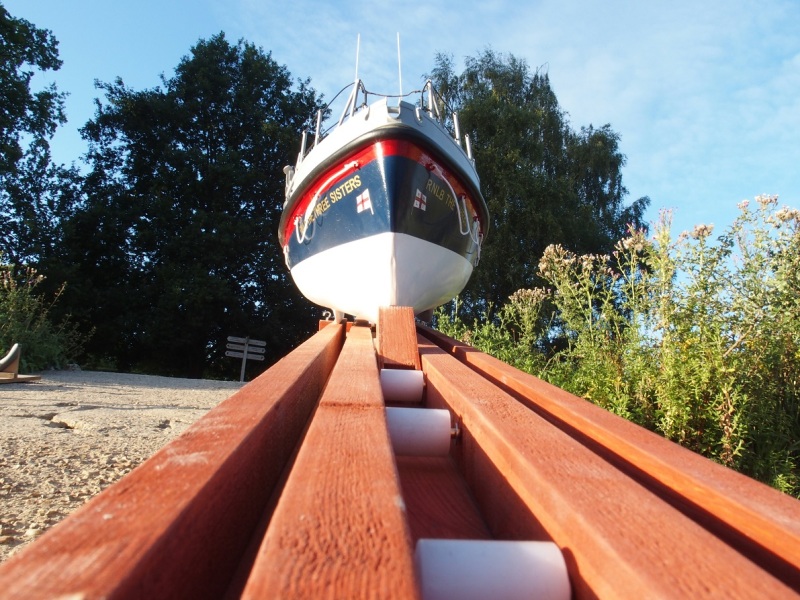
A pull on the chord and .....

..............quite a splash!
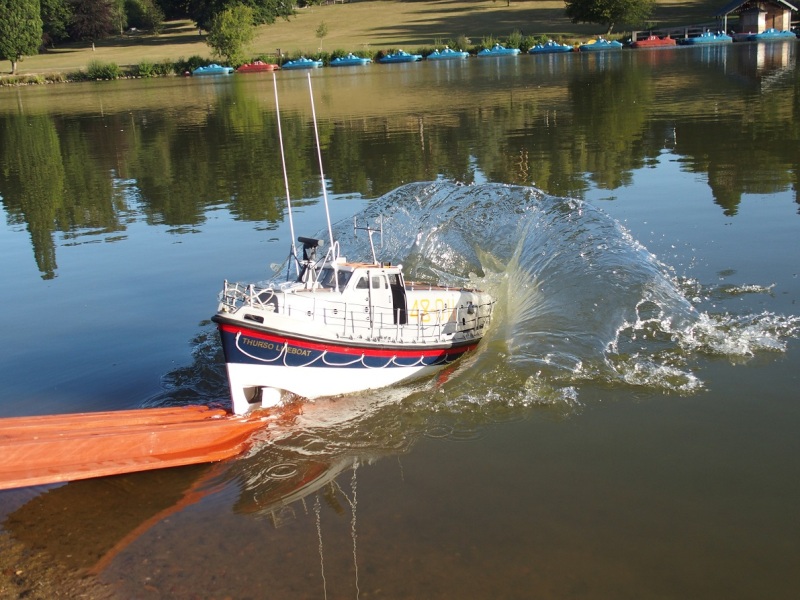

And finally.... Click below to see Martin's Riva model running on 4S